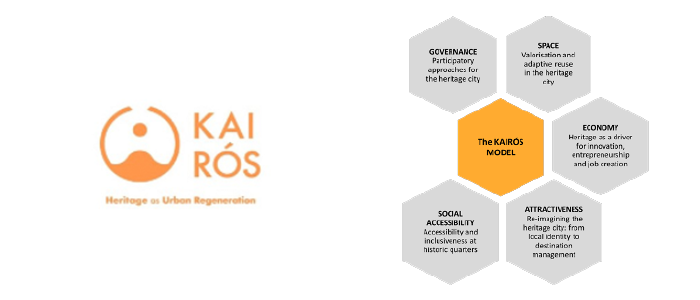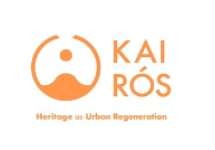Heritage as a tool for urban regeneration. URBACT Project Kairós fosters mutual learning among 7 European medium-sized cities.
On the 3 and 4 March 2021, the two-day thematic workshop on urban space organised by the KAIRÓS URBACT Action Planning Network and hosted by the Greek project partner City ofHeraklion took place.
More than 100 international researchers, urban planners and architects gathered online to discuss the dialectic relationship between the – already existing – built heritage and the production of new urban spaces. Various KAIRÓS project partners as well as other European cities dealing with cultural heritage and urban regeneration shared their good practices on this occasion.
The first workshop day focused on the igniting potential of architectural and urban design projects with examples from Ukmergé (Lithuania), Sibenik (Croatia), Heraklion (Greece), Bordeaux (France) and Torino (Italy).
During the second day, the different experts and city representatives shared various studies and planning formats, e.g. on the critical role of scoping key interventions for the derelict historic quarters in Mula (Spain); the importance of civil society engagement for urban regeneration strategies in Skopje, North Macedonia as well as strategic planning approaches for heritage-led urban regeneration in Sankt Hans, Denmark and Olot, Spain.
The final workshop session was dedicated to the urban revitalisation project of the neighbourhoods of Aghia Triada and Lakkos in the host city of Heraklion.
In the Workshop, the Kairós 5 pillars model, designed by Lead Expert architect Miguel Rivas was presented.
NOTUS was involved in the organization of the seminar in the framework of their assistance to the Municipality of Mula (Murcia, Spain) in the implementation, management and monitoring of the URBACT Kairós Project.



Comments are closed.